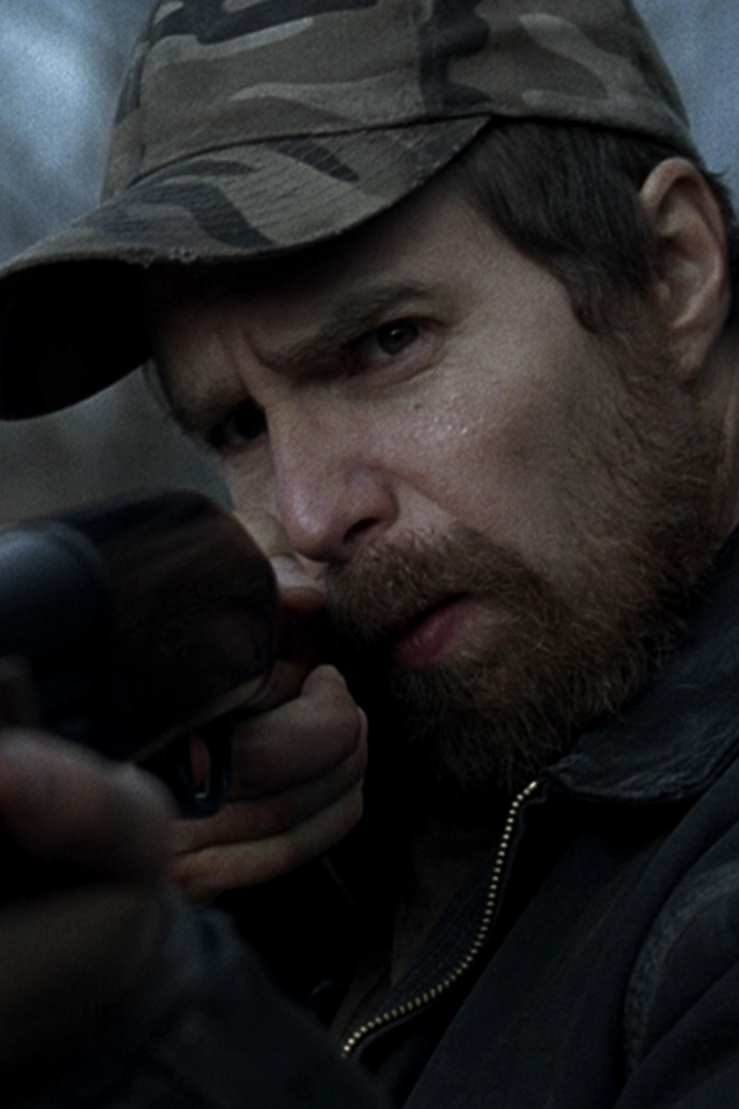 Rich with quality acting and high cinematic value, Director David M. Rosenthal’s (“Janie Jonesâ€) neo-noir thriller “A Single Shot,” is an age-old cat-and-mouse story — but in this tale, the hunter becomes the hunted.
Rich with quality acting and high cinematic value, Director David M. Rosenthal’s (“Janie Jonesâ€) neo-noir thriller “A Single Shot,” is an age-old cat-and-mouse story — but in this tale, the hunter becomes the hunted.
Based on the novel of the same name, “A Single Shot” comes from a unique vantage point. The film’s writer, Matthew F. Jones, wrote the novel as well. This benefited the film, as Jones’s notable cinematic style of writing was vibrant in this atmospheric dramatic thriller.
The film starts with a bang — a single shot, ironically. The hunter, John Moon (Sam Rockwell, “Moonâ€), soon makes a discovery and in a moment of panic and desperation, makes a decision that sets the film in motion. Soon terrorized by those who want answers, Moon spirals down in a very suspenseful and “Coen-esque†crime drama that illustrates a modern noir tone with a classic dramatic structure.
Rockwell delivers a superb performance. He has tendency to play lonely characters that struggle with self-discovery and moral ambiguity stunningly well. Everything, from his look to the delivery of his character, highlighted his stellar performance.
But the most memorable performance of the film is Jeffery Wright’s portrayal of Simon — a drunkard and a close friend of Moon. His ability to capture the accent at its heart, his intoxicated mannerisms and the sheer gravity of his performance were simply captivating.
Jason Issacs, portraying the criminal Waylon, and William H. Macy playing Pitt, the town’s shifty lawyer also brought charismatic elements to the screen.
“A Single Shot†is by far Rosenthall’s most outstanding work since his first short film “Absence,†in which a man confronts his troubling past while bicycling through a forest. It’s amusing that Rosenthall had to come back to the woods to deliver his best work since shortly after his grad school years.
Rosenthall and Jones were able to pair elements of the novel with a cinematic style of which the tone and pace reminds one of the works of the Coen brothers and Terrence Malick. Although they necessarily did not achieve the “brutal, savage and wild†look that Rosenthall had intended for the film, the film did convey a dark and gritty look to an effectively told story.
One of the most notable aspects of the film was its cinematography. The Director of Photography, Eduard Grau (“Buriedâ€), exercised an elusive style of filming that resembles the phone call scene from “Rosemary’s Baby.†He kept the audience guessing in suspense by always keeping the element that captured the characters’ attention off-screen. Because this was done well and correctly, it allowed the film to deliver a level of suspense almost forgotten nowadays as it is used poorly in B-movies for cheap thrills and scares.
Grau’s ability to capture an environment enshrouded with fog and dark, ominous woods was simply brilliant. The film was cleverly shot in Vancouver to convey the story’s setting. The mountains, its winter fog and the dark foliage, all worked for the commendable eerie cinematic feel. Any cinematography held in high regards would not reach its full potential without sound design of the same caliber. Atli Örvarsson (“Babylon A.D.â€) composed suspenseful pieces that worked through the film’s gloomy tone as well as scenes concentrated more on the action.
With the hint of an irony at the end, “A Single Shot†wins in many aspects. It tries to leave its mark amongst the great noirs with a modern twist — and in some ways it succeeds, thanks to a well-told story that is both engaging and thought provoking.

Leave a Reply